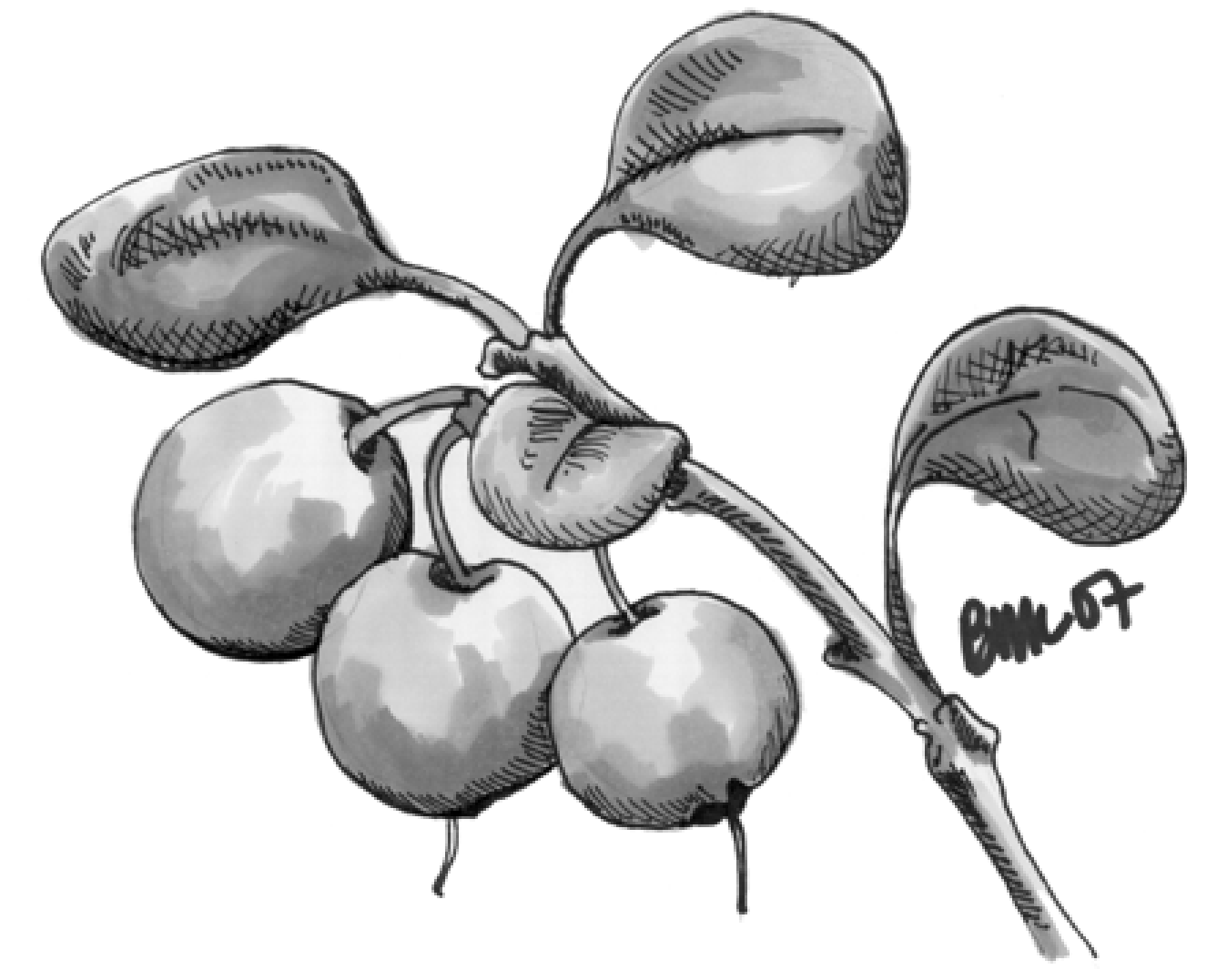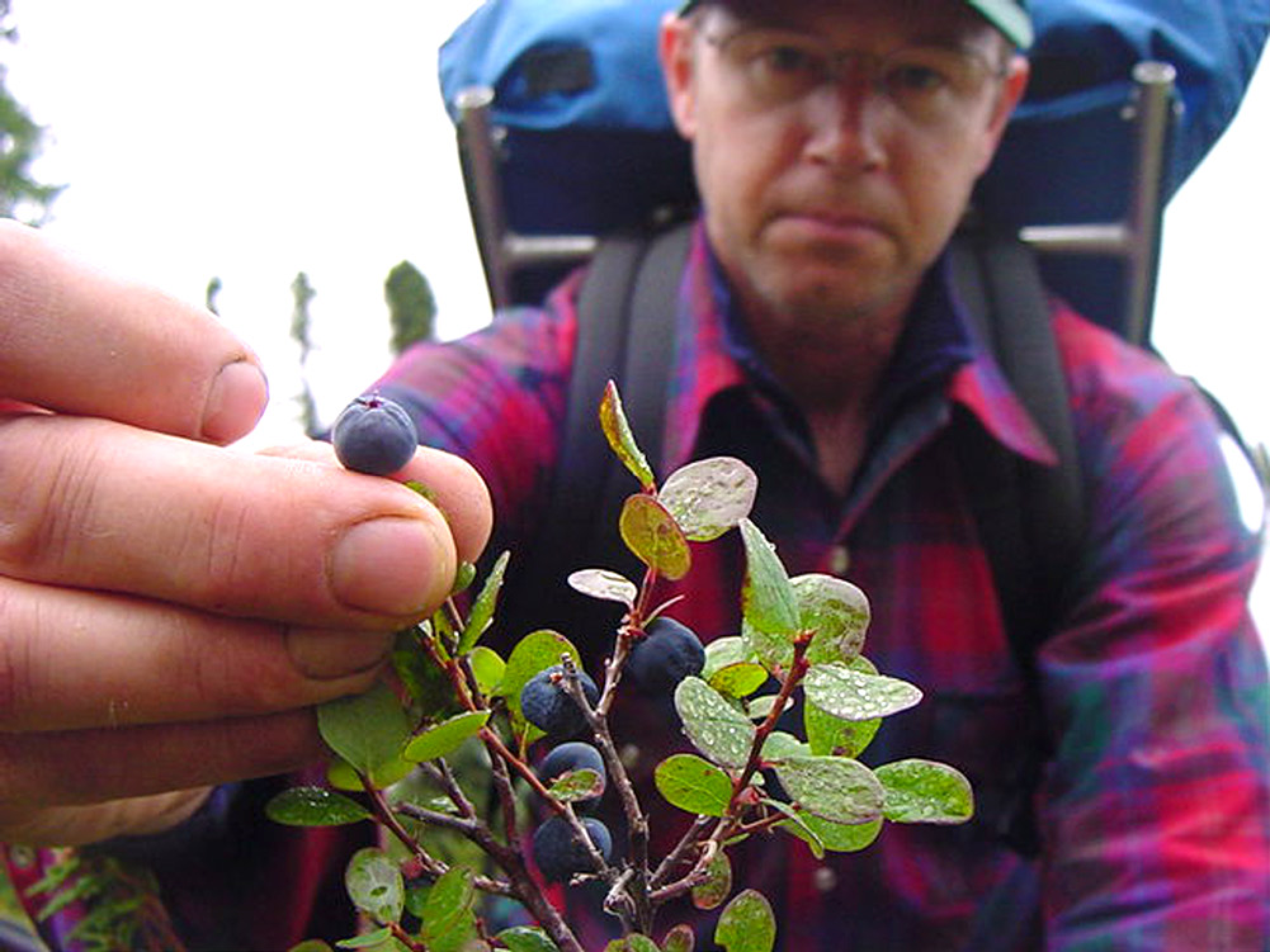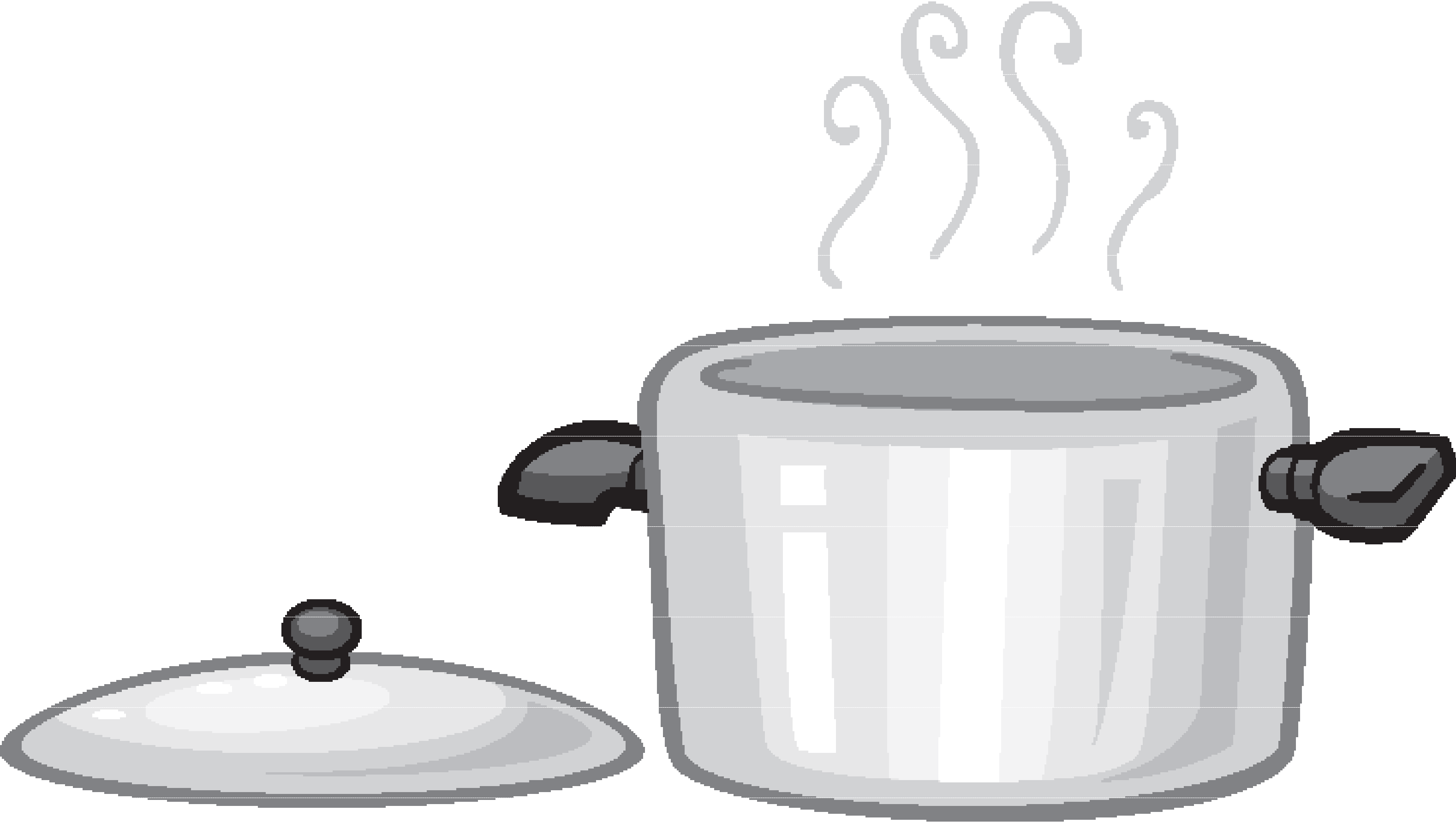Alaska Blueberries
FNH-00111 View this publication in PDF form to print or download.
by Julie Cascio
There are many species of blueberries in Alaska. All blueberries can be eaten fresh or used interchangeably in pies, muffins, puddings, jellies, jams and other recipes.
Nutrition and Health
Blueberries are a rich source of antioxidants, a group of biochemicals shown to be
an important part of the human diet. The oxygen radical absorption  capacity test (ORAC) shows overall antioxidant activity. Original research with fruits
shows cultivated blueberries with a score of 24, which is higher than other commercial
fruits included in the studies. Anything above 40 is considered very high.
capacity test (ORAC) shows overall antioxidant activity. Original research with fruits
shows cultivated blueberries with a score of 24, which is higher than other commercial
fruits included in the studies. Anything above 40 is considered very high.
Wild Alaska blueberries score even higher:
| Product | Score |
|---|---|
|
Blue Huckleberry |
111 |
| Dwarf Blueberry | 85 |
| Bog Blueberry | 77 |
| Alaska Blueberry | 76 |
| Wild Blueberry (Lower 48) | 61 |
When berries are processed, antioxidant levels change but are still high compared to other fruits.
Wild Alaska blueberry products provide the following ORAC values:
| Product | Score |
|---|---|
|
Dried Berries |
420 |
| Fruit Leather | 270 |
| Frozen Fruit | 71 |
| Frozen Juice | 48 |
| Canned Juice | 44 |
| Canned Fruit | 43 |
| Jam | 36 |
| Syrup | 32 |
Cleaning, Storage and Preservation
Spread a clean, dry terry cloth towel over a slanted surface, such as a cutting board with one end propped up a few inches above the other. Gently roll the berries down the towel; most of the debris and leaves will cling to the towel while the berries roll off.
Wild blueberries sometimes contain the immature or resting life stage of insects. Often, affected berries are wrinkled or distorted. One option is to pick through and discard these berries. Another option is to make a brine solution of ½ teaspoon salt to 1 gallon tepid water. Add berries and let stand for one hour. The worms will escape from the berries into the water. Drain and rinse berries.
Clean blueberries may be stored in a covered container in the refrigerator. Berries will keep up to one week. Long-term storage methods include freezing and drying.

How to Freeze
Arrange dry, fresh berries on a cookie sheet in a single layer. Place the cookie sheet in the freezer. When frozen, transfer berries to freezer bags or containers. Seal and label. Properly frozen berries will last up to two years.
How to Dry
Sun: Select firm, dry blueberries. Cover a flat tray with cheesecloth or light muslin. Spread the berries on the cloth; place tray in the sun. Dry in sun for two days, turning once or twice. Then set tray in a warm, dry place and let blueberries stand until leathery to the touch.
Oven: Use a very low heat (140F). The oven door must be left ajar so moisture can escape. Estimated drying time is 48 to 72 hours.
Dehydrator: Spread clean, dry berries on open screen, following the instructions that come with the dehydrator. Dry at 140F. Estimated drying time is 24 to 36 hours.
Store dried, cooled berries in an airtight container in a cool, dry place. Use as you would raisins. Dried blueberries can be soaked in water for use in baking.
How to Extract Juice
Combine 11 cups of blueberries and 1 cup water. Crush berries. Bring just to a boil and simmer 10 minutes. Strain through jelly bag or in a colander through several layers of cheesecloth. Let juice drip into a bowl. For clear juice, do not twist or press
jelly bag or cheesecloth. For long-term storage, the
juice should be canned or frozen.
Yield: 5½ cups
Hot pack for juice
Sterilize canning jars. Heat juice, stirring occasionally, until it begins to boil. Pour into hot jars, leaving ¼ inch headspace. Wipe jar rims. Adjust lids. Process in a boiling water canner.
- Pints or quarts — 5 minutes
- Half gallons — 10 minutes
How to Prepare Puree
Cooked Method: Add 1 cup water to 4 cups blueberries. Cook until skins have popped. Press through a food mill or sieve. Discard skins and seeds.
Yield: 2 cups
Uncooked Method: Rinse 4 cups blueberries; drain, put in a blender and blend until the consistency of thick puree.
Yield: 2 cups
For long-term storage, the puree may be immediately dried as fruit leather or frozen. To freeze, pack puree into rigid containers leaving ½ inch headspace to allow for expansion. Seal and freeze. Canning is not a safe method of preserving puree.
- To sterilize canning jars, boil in water for 5 minutes.
- To prepare two-piece lids (rings and tops), wash, rinse set aside until ready to use. Follow manufacture’s directions for use.
- If less sugar is desired in recipes calling for pectin, be sure to use no-sugar-needed pectin and follow the instructions on the box.
- See later instructions on this page for how to use a boiling water canner.
Recipes
Blueberry Applesauce Fruit Leather
- 1 cup blueberry puree
- 1 cup unsweetened applesauce
- 1 tablespoon honey
Oven dry: Combine blueberry puree, applesauce and honey. Line a cookie sheet with microwaveable plastic wrap. Spread puree mixture evenly about ¹⁄8 to ¼ inch thick over the plastic, but do not push it completely to the sides. Leave a bit of plastic showing for easy removal. Dry at 140F for 10 to 18 hours, leaving oven door slightly open so moisture can escape. Test periodically for dryness. The fruit leather is dry when it is pliable and peels easily off the plastic.
Dehydrator: Lightly oil the plastic tray or spread the puree on parchment paper cut to fit the dryer racks. Do not push the puree completely to the sides. Dry at 140F for about 8 hours until evenly dry. It should have a leathery texture. While warm, peel from plastic and roll. Allow to cool and rewrap the roll in plastic. Place the wrapped pieces in a heavy plastic bag or airtight storage container. Leather will keep up to one month in a cool, dry, dark place. For storage up to one year, place tightly wrapped rolls in the freezer.
Plain Blueberry Jam
- 4 cups crushed blueberries (about 6 cups whole berries)
- 2 tablespoons lemon juice
- 1 package powdered pectin (1¾ ounces)
- 4 cups sugar
Sterilize pint or half-pint canning jars and prepare lids. Measure sugar and set aside. Measure prepared fruit and lemon juice into a large saucepan. Add pectin and stir until dissolved. Bring to a full boil over high heat, stirring constantly. At once stir in sugar. Stir and bring to a full rolling boil that cannot be stirred down. Boil hard for 1 minute, stirring constantly. Remove from heat and quickly skim off foam. Pour jam into hot 8-ounce jam jars, leaving ¼ inch headspace. Wipe jar rims and add prepared two-piece lids. Submerge the filled, closed jars under boiling water for 10 minutes. Remove from the water bath and let set on a rack for 12 hours. When cool, check seal, wipe jars, remove ring and store in a cool, dry, dark place.
Yield: 5 cups
Simple Blueberry Jelly
- 5½ cups blueberry juice
- 5½ cups sugar
Sterilize pint or half-pint canning jars for 10 minutes in boiling water. Prepare lids and bands. Combine ingredients; bring slowly to boiling, stirring occasionally until sugar dissolves. Boil rapidly, stirring frequently, until gelling point is reached — 220F on a candy thermometer. Pour jelly into hot jars, leaving ¼ inch headspace. Wipe jar rims and add prepared two-piece lids. Process 5 minutes in a boiling water bath.
Yield: 7 cups
Blueberry Jelly
- 5½ cups blueberry juice
- 7 cups sugar
- 3 ounces liquid pectin
Sterilize pint or half-pint canning jars for 10 minutes in boiling water. Prepare lids and bands. Open pectin pouch and stand it upright in a cup or glass. Measure juice into a large saucepan. Stir in sugar. Place on high heat; stir constantly and bring to a full rolling boil that cannot be stirred down. Add the liquid pectin and heat again to a full rolling boil. Boil hard for 1 minute, stirring constantly. Remove from heat and quickly skim off foam. Immediately pour jelly into hot canning jars, leaving ¼ inch headspace. Wipe jar rims and add prepared two-piece lids. Submerge the filled, closed jars under boiling water for 10 minutes. Remove from the water bath and let set on a rack for 12 hours. When cool, check seal, wipe jars, remove ring and store in a cool, dry, dark place.
Yield: 8 cups
- Fill the canner halfway with water. Preheat water to a low boil. Place filled jars, fitted with lids, into the canner on the rack. Add more boiling water, if needed, so the water level is at least 1 inch above jar tops. Turn heat to its highest position until water boils vigorously. When the water boils, set a timer for the recommended processing time indicated in the recipe. Cover with the canner lid and lower heat setting to maintain a gentle boil throughout the processing time. Add more boiling water, if needed, to keep the water level above the jars.
- When the jars have been boiled for the recommended time, turn off the heat and remove the canner lid. Using a jar lifter, remove the jars and place them on a towel, leaving at least 1 inch of space between the jars during cooling.
- After cooling jars for 12 to 24 hours, remove the screw bands and test seals. Press the middle of the lid with a finger. If the lid springs up when finger is released, the lid is unsealed. If a lid fails to seal on a jar, remove the lid and check the jar-sealing surface for tiny nicks. If necessary, change the jar, add a new, properly prepared lid and reprocess within 24 hours using the same processing time. Alternately, adjust headspace to 1½ inches and freeze or store in the refrigerator and use within three days.
- If lids are tightly sealed on cooled jars, remove screw bands, wash the lid and jar
to remove food residue, then rinse and dry jars. Label and date the jars. Store
in a clean, cool, dark, dry place.

Cooperative Extension Resources
Using Alaska’s Wild Berries and Other Wild Edibles ($15), FNH-00120
Other Resources
Holloway, P., R. Dinstel and R. Leiner. 2006. Antioxidants in Alaska Wild Berries, Georgeson Botanical Notes, No. 27.
Julie Cascio, Extension Faculty, Health, Home and Family Development.
Reviewed December 2020
